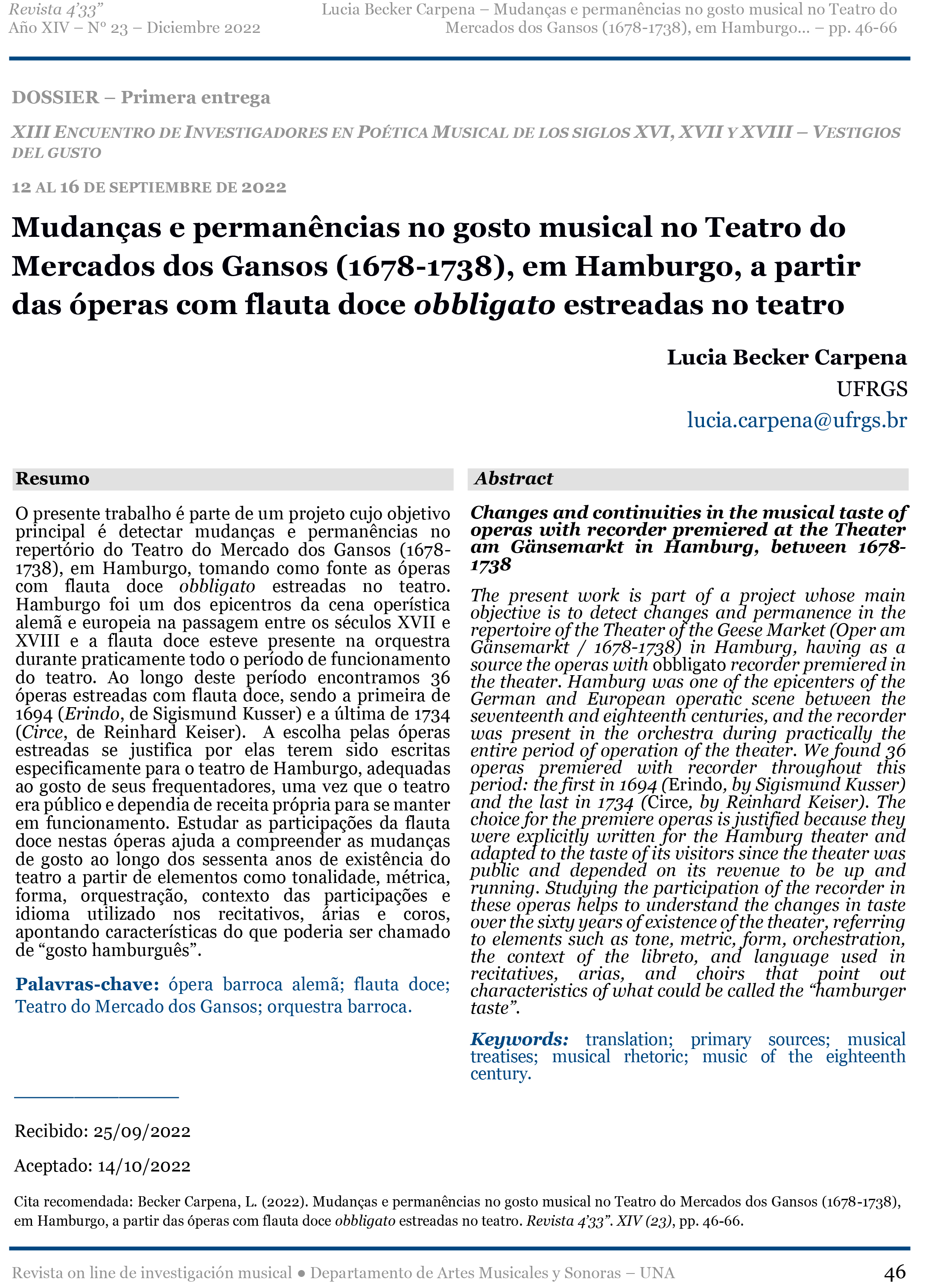Mudanças e permanências no gosto musical no Teatro do Mercados dos Gansos (1678-1738), em Hamburgo, a partir das óperas com flauta doce obbligato estreadas no teatro
Palabras clave:
ópera barroca alemã, flauta doce, Teatro do Mercado dos Gansos, orquesta barroca, musical teatrises, musical rhetoric, music of the eighteenth centuryResumen
Resumo
O presente trabalho é parte de um projeto cujo objetivo principal é detectar mudanças e permanências no repertório do Teatro do Mercado dos Gansos (1678-1738), em Hamburgo, tomando como fonte as óperas com flauta doce obbligato estreadas no teatro. Hamburgo foi um dos epicentros da cena operística alemã e europeia na passagem entre os séculos XVII e XVIII e a flauta doce esteve presente na orquestra durante praticamente todo o período de funcionamento do teatro. Ao longo deste período encontramos 36 óperas estreadas com flauta doce, sendo a primeira de 1694 (Erindo, de Sigismund Kusser) e a última de 1734 (Circe, de Reinhard Keiser). A escolha pelas óperas estreadas se justifica por elas terem sido escritas especificamente para o teatro de Hamburgo, adequadas ao gosto de seus frequentadores, uma vez que o teatro era público e dependia de receita própria para se manter em funcionamento. Estudar as participações da flauta doce nestas óperas ajuda a compreender as mudanças de gosto ao longo dos sessenta anos de existência do teatro a partir de elementos como tonalidade, métrica, forma, orquestração, contexto das participações e idioma utilizado nos recitativos, árias e coros, apontando características do que poderia ser chamado de “gosto hamburguês”.
Abstract
Changes and continuities in the musical taste of operas with recorder premiered at the Theater am Gänsemarkt in Hamburg, between 1678-1738
The present work is part of a project whose main objective is to detect changes and permanence in the repertoire of the Theater of the Geese Market (Oper am Gänsemarkt / 1678-1738) in Hamburg, having as a source the operas with obbligato recorder premiered in the theater. Hamburg was one of the epicenters of the German and European operatic scene between the seventeenth and eighteenth centuries, and the recorder was present in the orchestra during practically the entire period of operation of the theater. We found 36 operas premiered with recorder throughout this period: the first in 1694 (Erindo, by Sigismund Kusser) and the last in 1734 (Circe, by Reinhard Keiser). The choice for the premiere operas is justified because they were explicitly written for the Hamburg theater and adapted to the taste of its visitors since the theater was public and depended on its revenue to be up and running. Studying the participation of the recorder in these operas helps to understand the changes in taste over the sixty years of existence of the theater, referring to elements such as tone, metric, form, orchestration, the context of the libreto, and language used in recitatives, arias, and choirs that point out characteristics


